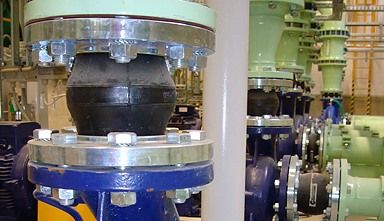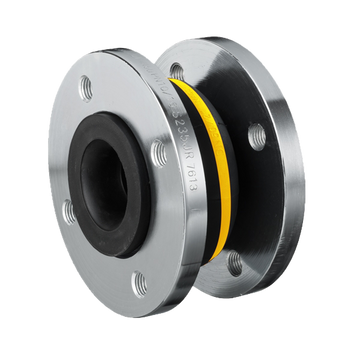The Purpose of a Rubber Compensator
Use a rubber compensator in piping systems, HVAC installations, industrial machinery, and water treatment plants to reduce vibrations and enhance durability and performance.

A rubber expansion joint, also known as a rubber compensator, is a flexible connector used in piping systems to absorb movements, vibrations, pressure fluctuations, and misalignments. These components are essential in industrial applications where pipes are exposed to mechanical stress, thermal expansion, and dynamic forces.
Functions of a Rubber Expansion Joint
- Absorbing Thermal Expansion and Contraction
- Temperature variations cause materials to expand and contract in piping systems. A rubber expansion joint prevents damage by compensating for these movements and reducing stress on the system.
- Damping Vibrations and Noise
- Pumps, compressors, and turbines generate vibrations that can lead to structural damage and noise pollution. A rubber compensator absorbs these vibrations, extending the system's lifespan and reducing operational noise.
- Compensating for Misalignments
- Pipeline systems can experience slight misalignments during installation. A rubber expansion joint offers flexibility, helping to correct these deviations and prevent excessive mechanical stress.
- Pressure Resistance and Shock Absorption
- In systems with fluctuating pressure, a rubber compensator absorbs pressure surges, reducing the risk of leaks and pipe failures.
- Protection Against Chemical Exposure
- Depending on the rubber material (such as EPDM, NBR, or Viton), rubber expansion joints can resist various chemicals, oils, and high temperatures, making them suitable for aggressive environments.
Rubber Compensator / 51 / lilac PN16 / steel 'A' / DN150
Compensator 51 lilac PN16 steel 'A' DN150 – for absorbing vibrations and pressure differences in pipework. Designed for industrial applications with high pressure.
Construction and Materials
A rubber expansion joint typically consists of:
- Elastomer (Rubber) Body: This flexible section absorbs movements and resists chemical and thermal influences. Common materials include:
- EPDM: Resistant to heat, ozone, and chemicals.
- NBR (Nitrile Rubber): Oil and fuel resistant.
- Viton (FKM): High resistance to heat and aggressive chemicals.
- Reinforcement Layers: Often reinforced with textile or metal layers to enhance pressure resistance.
- Flanges or Couplings: Made of steel, stainless steel, or plastic, ensuring a secure connection to the piping system.
Rubber Compensator / 49 / yellow / PN16 / steel / 'A' / DN100 Rubber Compensator / 49 / yellow / PN16 / steel / 'A' / DN100
Compensator 49 yellow PN16 steel 'A' DN100 – for absorbing vibrations and pressure differences in pipework. Designed for industrial applications with high pressure.
Applications
Rubber expansion joints are widely used in various industries, including:
- Industrial Plants: Used in manufacturing processes where piping systems are exposed to temperature changes and vibrations.
- HVAC (Heating, Ventilation, and Air Conditioning): To accommodate thermal expansion and vibrations in heating and cooling systems.
- Water Treatment and Sewage Systems: These absorb pressure fluctuations and vibrations in pump systems.
- Marine and Offshore Industries: Flexible piping systems must withstand dynamic movements and harsh conditions.
- Chemical and Petrochemical Industry: Where resistance to aggressive chemicals and high temperatures is critical.
Rubber Compensator / 49 / green PN16 / stainless steel 316 'A' / DN65
Compensator 49 green PN16 stainless steel 316 'A' DN65 – for absorbing vibrations and pressure differences in pipework. Designed for industrial applications with high pressure.
Advantages of a Rubber Expansion Joint
High Flexibility: Absorbs axial, lateral, and angular movements. Vibration and Noise Reduction: Minimizes wear and tear on pipes and equipment. Lightweight and Easy to Install: Compared to metal expansion joints. Durable and Low Maintenance: Long service life when adequately selected for the application.


